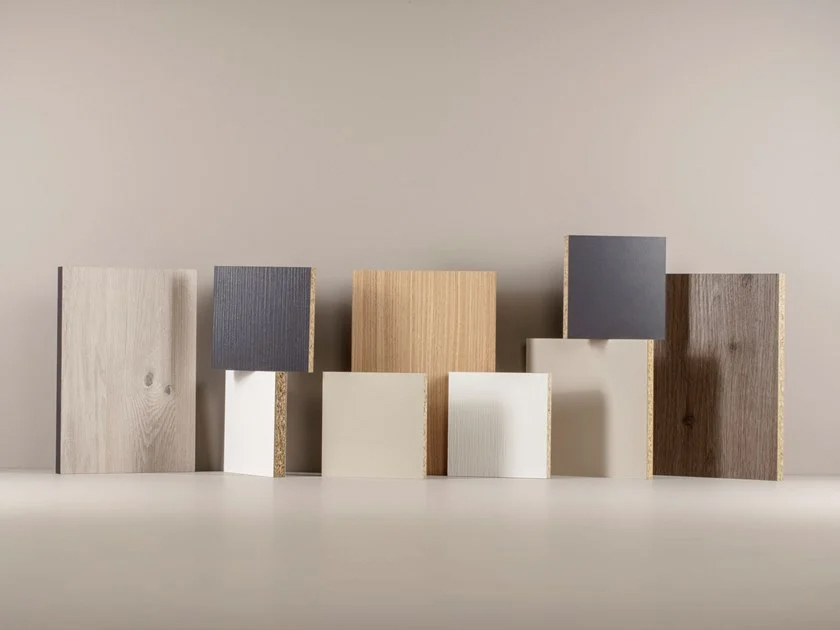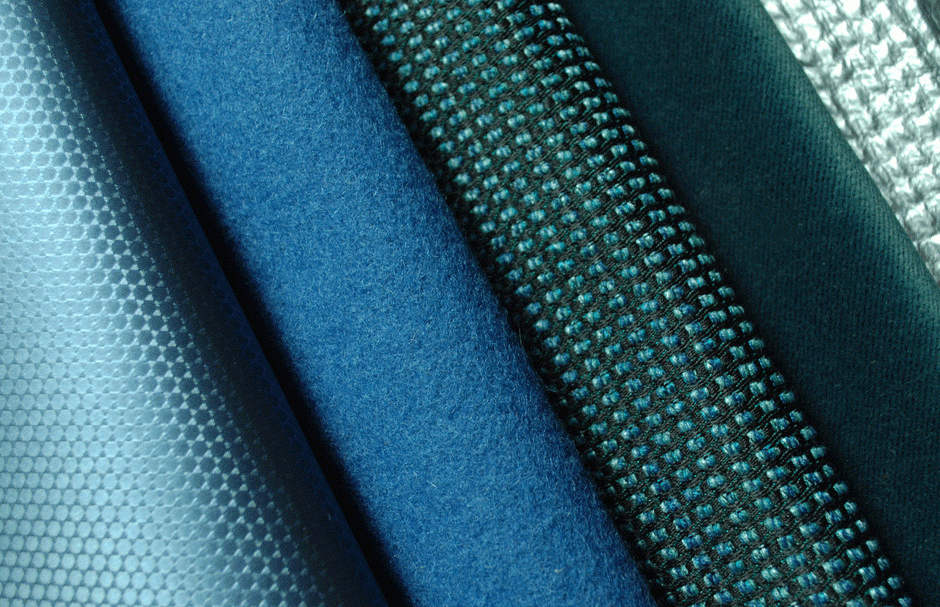Details
OSB, MDF, Plywood and Particle Board - Know the difference
12 Sep 2021
When we set out to write 'Melamine, Laminate, Veneer - Know the difference' three years ago, it was to help the wider industry stop mixing the terms and truly understand the fundamental difference. I have to admit it served our own team as much as it did everyone else.
As trends changed we’ve seen the use of different substrates in worktops and some even left unfinished to create the industrial look. Just like you sometimes pay more money for distressed denim, you can also pay more to have your furniture look industrial.
What is a substrate?
In the case of surfaces, it’s a solid material upon which a coating or other material is bonded to it through an adhesive or other chemical/industrial process.
What are the different substrates available?
OSB - Oriented Strand Board (picture) may look like wood chips stuck together, however its engineered composition makes it one of the more widely used substrates in construction today. A logs’ ground strands are mixed with wax and adhesive to form thick mats where each strand is positioned perpendicular to each other similar to the construction of plywood.
Plywood on the other hand is made from thin sheets of veneer that are placed perpendicular to the adjacent layer and cross-laminated with glue in a hot press.
MDF - Medium density fiberboard is created when the wood fibres mixed with resin and wax is distributed evenly across a uniform mat and sent to a hot press activating the resit and setting the strength and density profile. It’s manufacturing process however creates zones of increased density and mechanical strength near the two faces of the board and a less dense core.
Particle Board also known as chipboard is manufactured by mixing flakes of wood, sawdust and sawmill shavings together with resin and compressed multiple times to get the best bond between the resin and the chips.
While more substrates come on to the market, the ones mentioned above are definitely the most common ones used in design and construction.
How do you choose between substrates?
Having clarity on the application of your finished product determines the choice of substrate used.
While OSB and Plywood are stiff and strong products, they are often used for construction rather than finished furniture products. However its strength does lend itself to furniture products that need to be load bearing as Plywood holds on to screws very well.

| OSB | Plywood |
| Composition : Rectangular shaped wood strands layered and combined together with wax and resin adhesive. | Composition :Thin sheets of veneer are glued together. |
| Density : OSB is made from as many as 50 strand layers packed and compressed into the same thickness. | Density : A sheet of plywood might be 5 to 7 plies thick. |
| Price Point : OSB is almost always cheaper than plywood. | Price Point : Though pricing for both OSB and plywood can sometimes be very similar, plywood generally costs more. |
| Application : Use in, Roofs, Walls, Subflooring. | Application : Used in Roofs, Walls, Subfloors, Boxes, Packages, Sports equipment, Musical equipment, Playground equipment, High-end loud speakers. |
Particle & MDF boards are often used in furniture for various applications, however MDF being a denser raw material is heavier and can carry more weight than particle board.

| Particle Board | MDF |
| Composition : Particle board is an engineered wood product made from waste products like wood chips, sawdust, and wood shavings. | Composition : Medium Density Fiberboard is an engineered wood composite made by mixing the wood fibers with wax and resin binders. |
| Process : The waste wood products are mixed using a resin and then pressed under high temperature into sheets. | Process : The wood fibers are converted into fine grains by deliberation process and then mixed with resin for pressing under high temperature into sheets |
| Strength : It is used in light weight furniture such as shoe racks, accent pieces, portable furniture, etc. where heavy loads are not applied. | Strength : It is mostly used for making furniture, cabinets, and shelves in storage units, as it can handle more load than particle board. |
| Screw Test : Particle have better screw holding strength | Screw Test : Does not hold a screw well as it is made up of very fine fibers. |
Costs vary across all four of these raw materials depending on the country and region you are in, however Plywood is usually the most expensive followed by OSB, MDF and Particle Board as the least expensive. OSB, Plywood and MDF are also more resistant to humidity and moisture than particle board making your choices a little simpler.
The Total Office:
As a provider of workspace solutions, The Total Office helps elevate the work experience of its customers by addressing collaboration, acoustics, environmental sustainability and well being at the design stage using globally recognized products and tools. This enables its customers to raise their productivity in the workspace laying a foundation for innovation and a sound work culture. The Total Office is Headquartered in Dubai, UAE serving the country and the wider Middle East region. For more information visit: www.thetotaloffice.com
Source:
- https://bct.eco.umass.edu/publications/articles/choosing-between-oriented-strandboard-and-plywood/
- https://en.wikipedia.org/wiki/Medium-density_fibreboard
- https://en.wikipedia.org/wiki/Particle_board
- https://www.displays2go.com/Guide/Comparing-Building-Materials-Particle-Board-MDF-Plywood-17
- https://www.homelane.com/blog/mdf-vs-particle-board/




